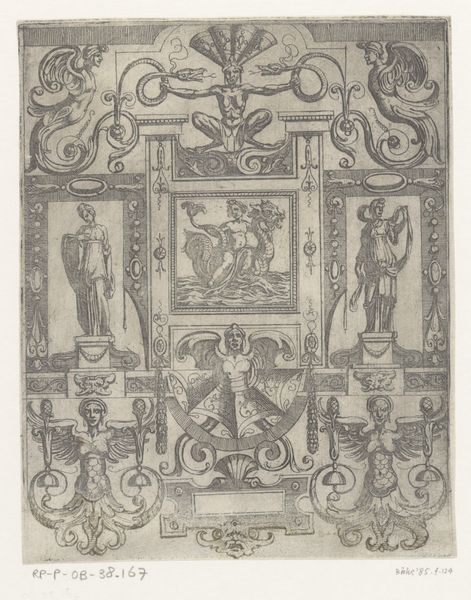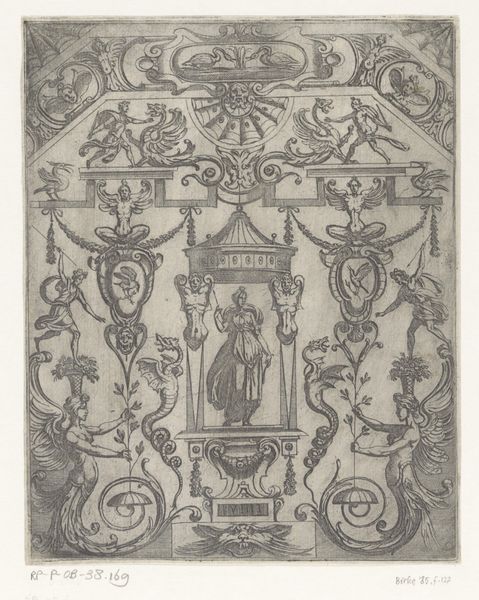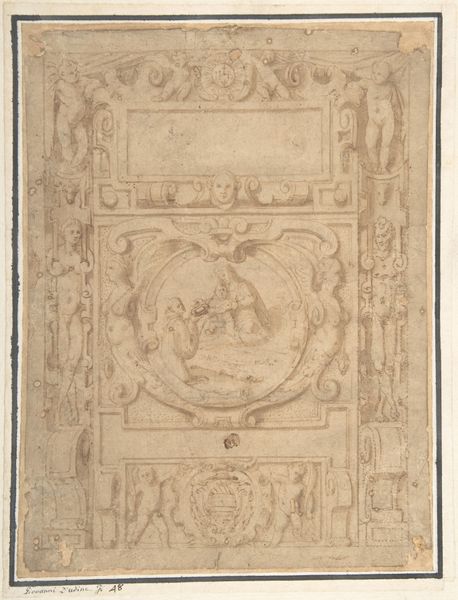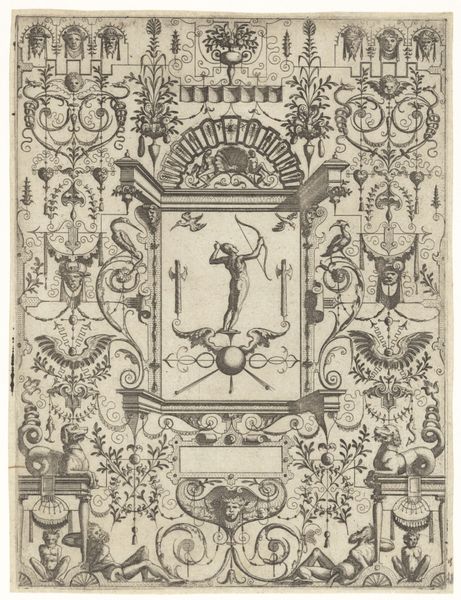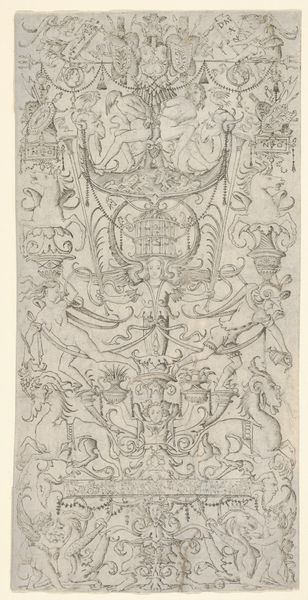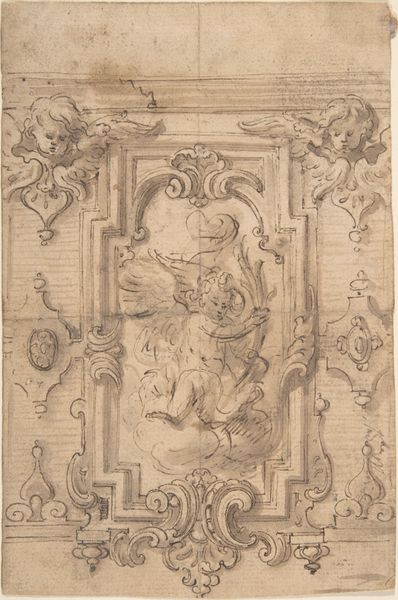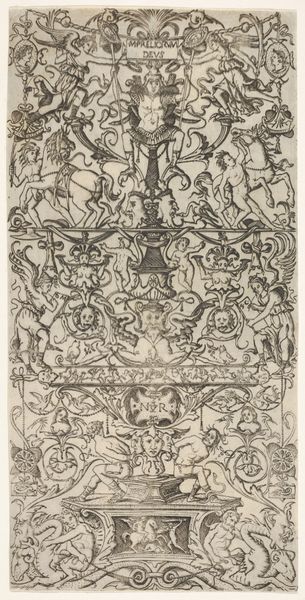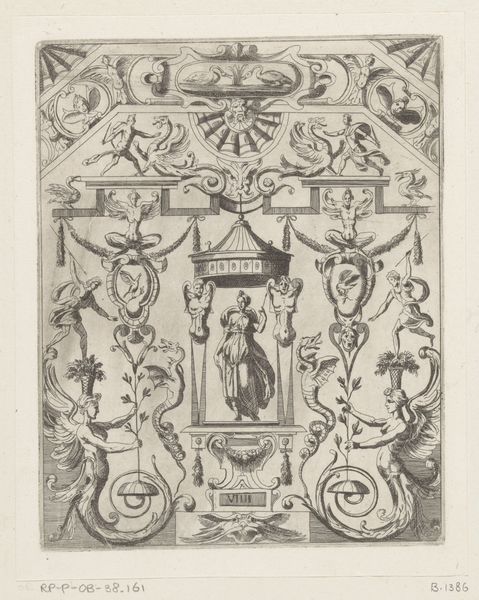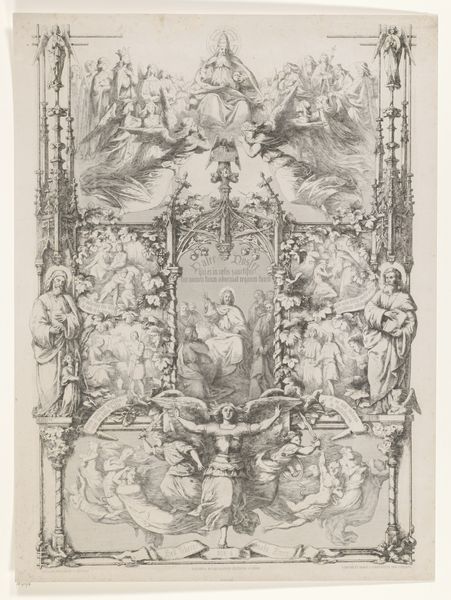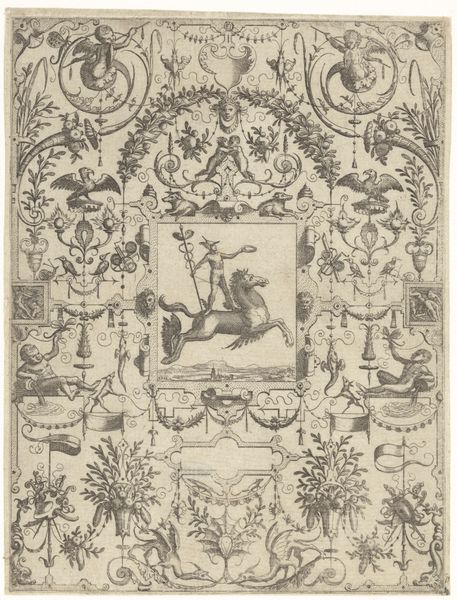
ornament, print, engraving
#
ornament
#
allegory
#
baroque
#
pen drawing
# print
#
geometric
#
history-painting
#
engraving
Dimensions: height 185 mm, width 146 mm
Copyright: Rijks Museum: Open Domain
This is Antonio Tempesta’s, "Grotesk ornament met Apollo op zijn zonnewagen in het midden," an engraving made sometime between 1570 and 1630. Tempesta was working in Italy at a time when the Renaissance was evolving into the Baroque period. Here, Tempesta uses the grotesque style to create a world of hybrid figures, distorting the boundary between human, animal, and plant forms. These images, filled with mythological figures like Apollo, reflect the era's fascination with classical antiquity, yet they also diverge from it. The grotesque allowed artists to explore themes of metamorphosis, desire, and the instability of identity. Consider the emotional impact of these fluid forms, which evoke both wonder and unease, embodying a world where the familiar is constantly transformed into something strange and new. This reflects societal shifts as traditional structures were challenged and reimagined. Through the lens of the grotesque, Tempesta both honors and destabilizes classical traditions, mirroring the complex negotiations of identity and representation in his time.
Comments
No comments
Be the first to comment and join the conversation on the ultimate creative platform.
